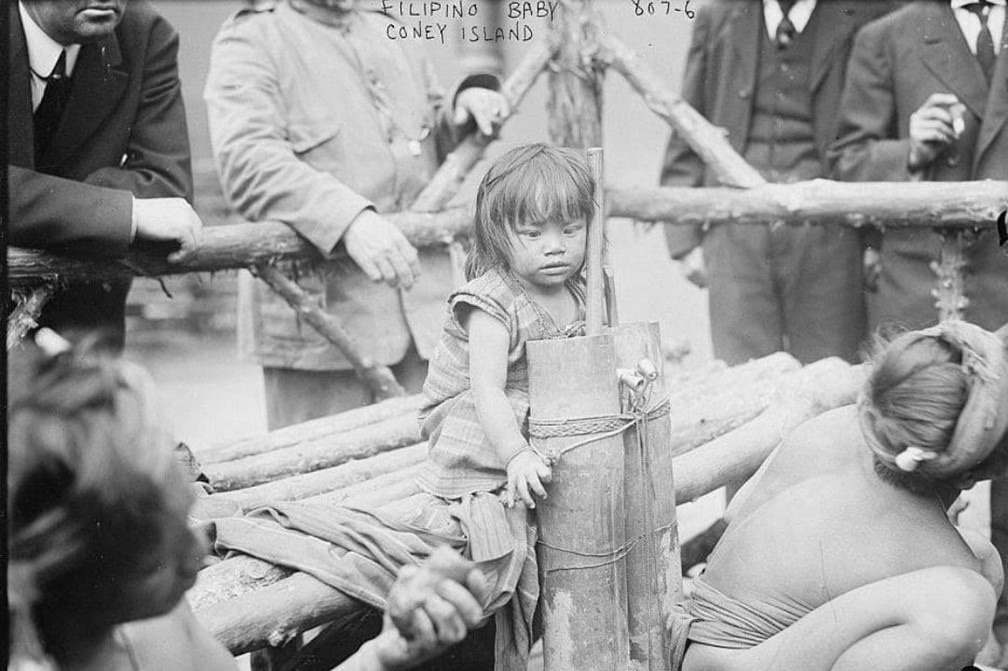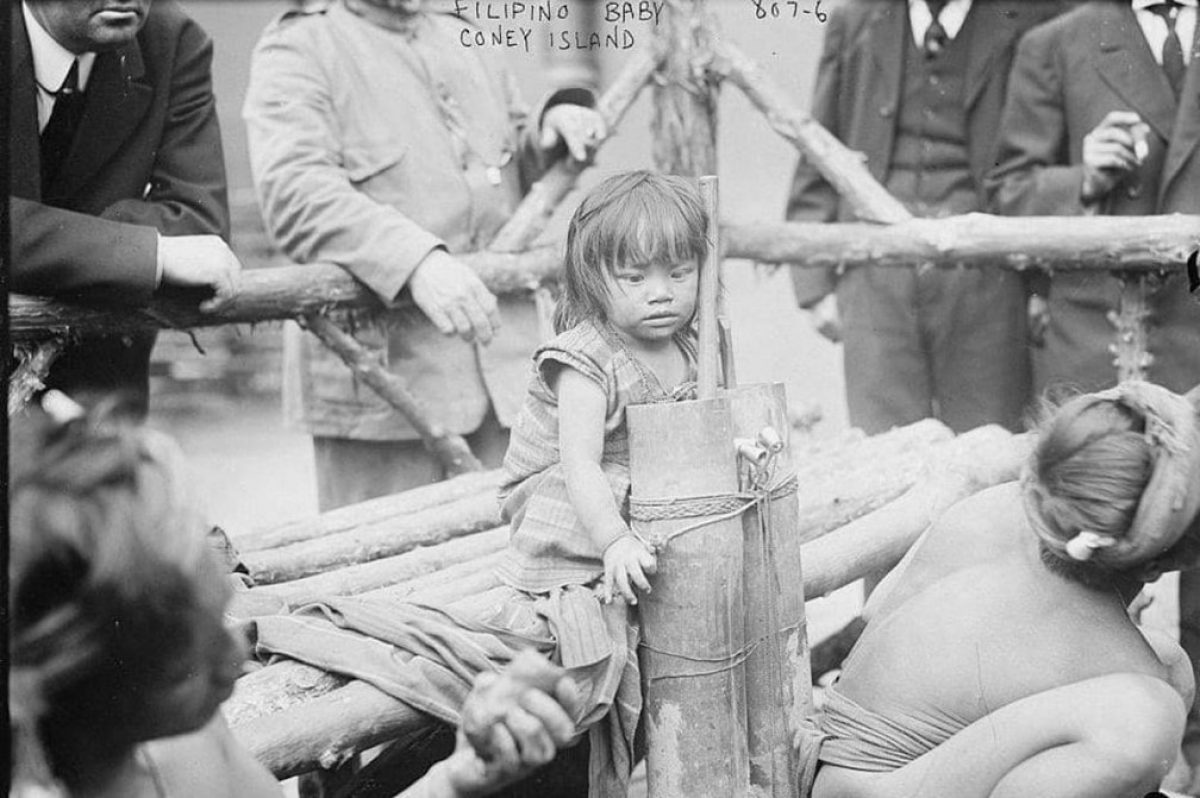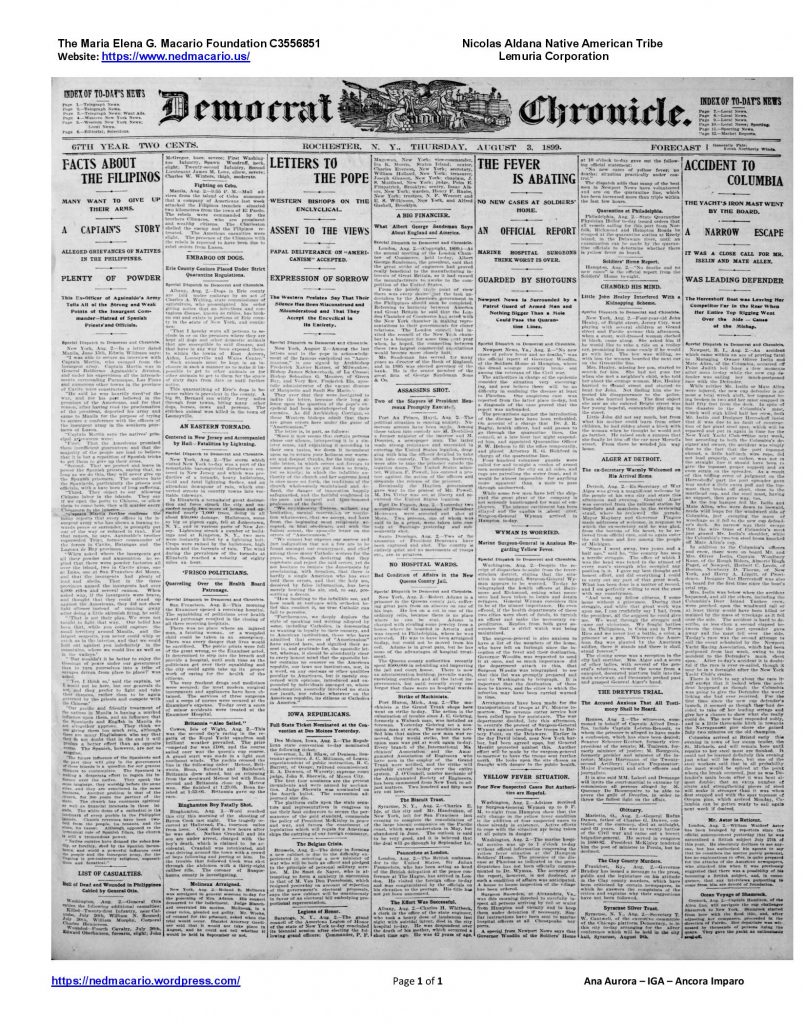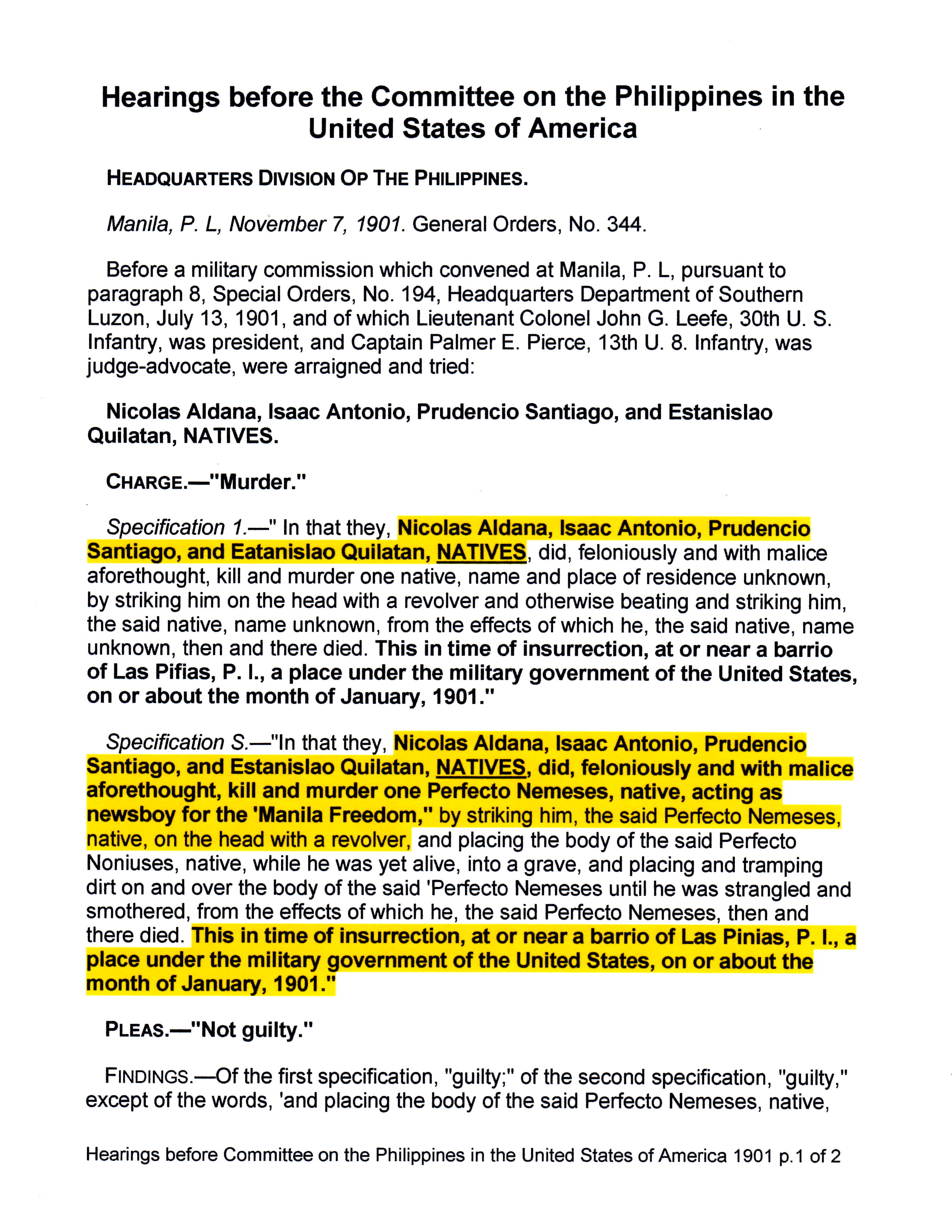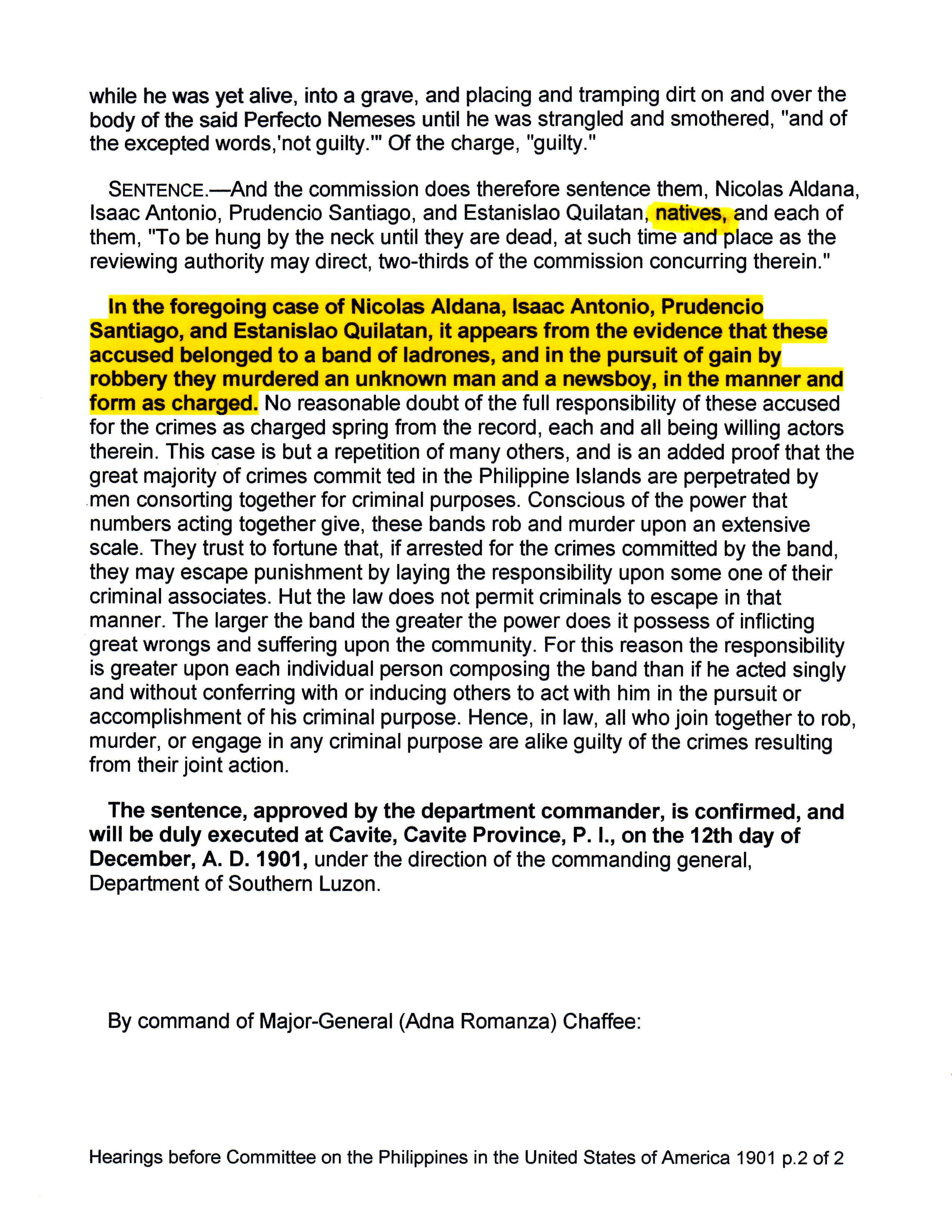PHILIPPINE WAR 1899 – 1902
February 4, 1899 – Considered the start of the Philippine War (1899-1902) when a Filipino was shot by an American sentry as he crossed Silencio Street, Sta. Mesa, Manila.
February 5-6 1899 – Battle of Manila – Philippine War 1899-1902. Ill-equipped Army of Liberation was no match to the superior arms of the Americans. Aguinaldo’s army was split into. He was with the group north of Manila while Pio Del Pilar and others retreated to the South.
April 28, 1899 – Aguinaldo sent Col. Manuel Arguelles, Gen. Antonio Luna’s Chief of Staff as a special commissioner to seek a truce and possible end of hostilities. Otis wanted unconditional surrender. Here is where Otis was criticized for his firm stand. But Otis claimed he has every reason to demand unconditional surrender. Aguinaldo was buying time. Arguelles was in fact trying to buy arms from Japan while he was in Manila.
May 2, 1899 – Aguinaldo’s representatives proposed a three-month cease-fire, couched in language which required Otis to acknowledge the Philippine Republic as a sovereign nation. Otis refused the truce on those terms, but gave the delegate a copy of President McKinley’s plan for a Philippine civil government, which would include an advisory council and judiciary selected from Americans and Filipinos.[Note 2]
Aguinaldo’s delegates were won over. Aguinaldo’s cabinet headed by hard-liner Apolinario Mabini was ousted and replaced with a “Peace cabinet” headed by Pedro Paterno, which sent the delegates back to Manila to discuss surrender terms with Otis.
May 13, 1899 – Aguinaldo again sent another peace commission to include Gen.Gregorio Del Pilar, Gracio Gonzazo, a member of Aguinaldo’s cabinet, Lt. Col. Alberto Barretto, military advocate, & Maj. Zialcita, a member of Aguinaldo’s staff. Additional members of the delegation were Florentino Torres, Pablo Ocampo and Theodore Yanco, residents of Manila.
General Luna who against the peace negotiations, arrested the delegates and Paterno’s cabinet. He then restored Mabini and the hardliners. Negotiations collapsed, and Otis resumed his offensive.
Felipe Buencamino saw it was useless to fight and DEFECTED to the Americans taking P90,000.00 of the fledgling republic’s funds.
This is in reference to the movie “HENERAL LUNA” (2015).
June 5, 1899 – Gen. Antonio Luna was assassinated in Cabanatuan. Antonio Luna was 31 yrs. old FROM a wealthy criollo family in ILOCOS NORTE. “His equally hotheaded brother the painter Juan Luna had killed his wife for allegedly committing adultery.”
So Antonio, a soldier, was not really an ideal husband material if his brother Juan, a painter, killed the wife. From page 156 & 157 from Karnow’s book “In Our Image”. (March 1990).
HERE IS THE MYSTERY: Gen. Gregorio Del Pilar the “Boy General” only 24 years old PRESIDED OVER THE TORTURE OF GEN. ANTONIO LUNA’S AIDES. WHY??!! See: Page 158 & 159 from Karnow’s book “In Our Image” (March 1990).
According to Karnow’s book, two Illustrados, Pedro Paterno and Felipe Buencamino were in favor of making a deal with the Americans, something Gen. A. Luna would never agree.
It appears from this account, Aguinaldo gave “his discreet approval” to Luna’s assassination on June 5.
In another book, Aguinaldo reputedly told his captor Funston the issue with Luna boiled down, “either Luna would kill him (Aguinaldo) or Aguinaldo would kill Luna.” P. 136.
But then again, after Luna was killed, why didn’t Aguinaldo resumed peace negotiations with the Americans? Later after his capture Aguinaldo would pledge allegiance to the U.S. rather quickly on April 1, 1901, eight (8) days after his capture.
Reference: “In Our Image: America’s Empire in the Philippines by Stanley Karnow (Author) ISBN-13: 978-0345328168 ISBN-10: 0345328167
In the meantime, back in the South . . .
June 10, 1899 – Start of operation towards Las Piñas.
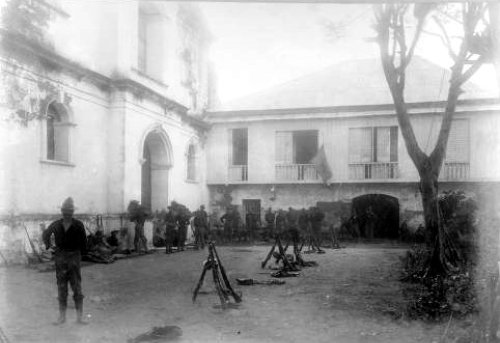
June 12, 1899 – Gen. Henry W. Lawton (photo below) sets up HQ in Las Piñas.
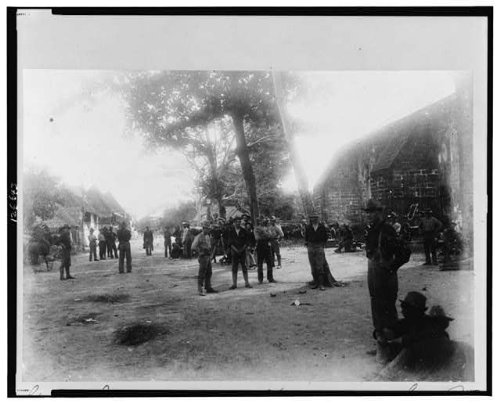
June 12, 1899 – Gen. Henry W. Lawton sets up his HQ in Las Piñas Bamboo Organ Church on the eve of the Battle of Zapote Bridge.
June 13, 1899 – Battle of Zapote River Bridge. It was the second biggest battle of the Philippine War next to the Battle of Manila Feb. 5 & 6, 1899. Gen. Lawton called the battle of Zapote Bridge “A beautiful battle.”
The Battle of Zapote Bridge also known as the Battle of Zapote River was fought on June 13, 1899 between 3,000 American soldiers and 5,000 Filipinos.
It was the Battle of Zapote Bridge that earned the respect of General Henry Ware Lawton, whose dispatches invariably carried a sympathetic note of the heroism displayed by Filipinos fighting for their freedom.
The Battle was called the “Liveliest Engagement of the War.”
The New York Times reported that it [the Filipino Army] was “the largest and best organized body of men which had yet met American troops.”
After the Battle of Zapote Bridge, everything went downhill for the so-called “Army of Liberation” led by Aguinaldo and the Hacienderos , the future oligarchs of the Philippines).
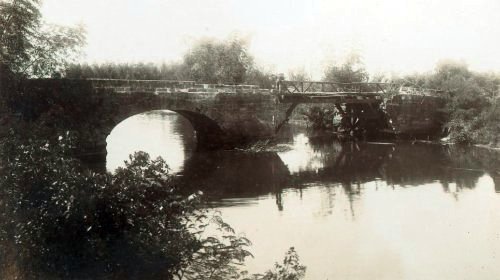
Above: Zapote River Bridge as it stood after the Battle on 13 June 1899. It was the second biggest battle of the Philippine War next to the Battle of Manila Feb. 5 & 6, 1899. Gen. Lawton called the battle of Zapote Bridge “A beautiful battle.”
====================================
AFTERMATH OF THE BATTLE OF ZAPOTE BRIDGE
On June 15, 1899, two days after the climatic Battle of Zapote Bridge correspondent Edwin Wildman interviewed one of Aguinaldo’s officers, Capt. Martin who left the insurgent camp and surrendered to the American troops stationed in Las Piñas.
Apparently Capt. Martin heard how Gen. Henry W. Lawton and his men earned the trust and respect of the people of Las Piñas. Capt. Martin told Wildman the grievances of the Filipinos and their concerns with the American authorities. He also said that many native troops were ready to surrender.
It was only on Aug. 3, 1899 that newspapers across the United States published the story of Capt. Martin based on Edwin Wildman’s interview that must have been conducted on or before June 15, 1899. 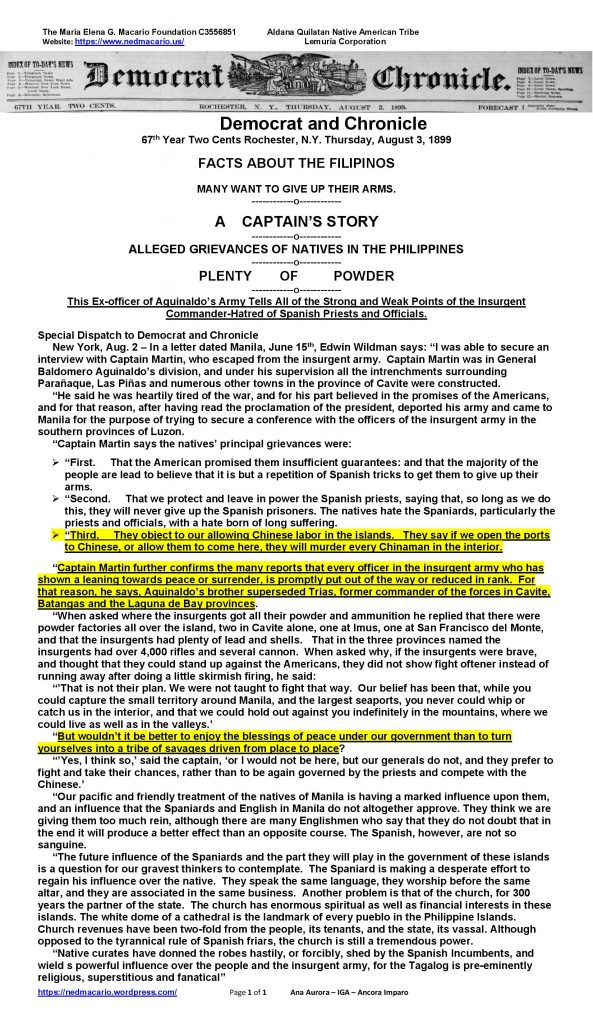
The story of Capt. Martin is on the front page of the newspaper Democrat Chronicle Thursday Aug. 3, 1899 at upper left hand “A Captain’s Story”.
Also in June 1899, Gen. Henry W. Lawton allowed natives of Las Piñas a certain measure of autonomy and under American supervision organized the local municipal government of Las Piñas.
It being the last months of the 19th century, word about this development in the Philippines was not published in the USA until Aug. 1, 1899 in Harper’s Weekly – History of the War in the Philippines.
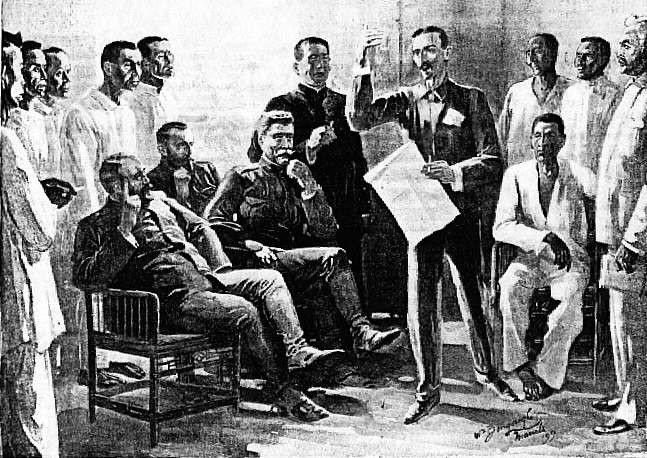 “Municipal Home-Rule for the Filipinos/Organizing the Local Government at Las Piñas. The Interpreter explaining American Institutions to the newly elected President.—Drawn from Life by William Bengough.” Harper’s Weekly – History of the War in the Philippines Aug. 1, 1899.
“Municipal Home-Rule for the Filipinos/Organizing the Local Government at Las Piñas. The Interpreter explaining American Institutions to the newly elected President.—Drawn from Life by William Bengough.” Harper’s Weekly – History of the War in the Philippines Aug. 1, 1899.
[Seated are Brig. Gen. Frederick D. Grant; Dean C. Worcester, Philippines Commissioner, and Maj. Gen. Henry W. Lawton. Standing behind Gen. Grant is Calixto Laral, President, and, to his left, Paulo Ellanigat, Vice-President. The American officials all have chairs. Only one Filipino is seated. The newly elected president is standing].
The Irony of Aguinaldo’s Capture
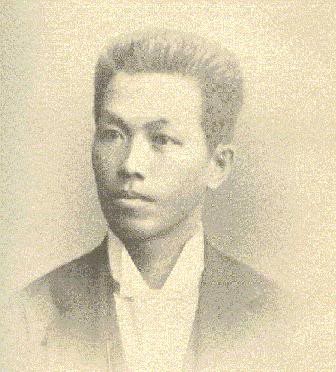
Emilio F. Aguinaldo
March 23, 1901 – Gen. Emilio Aguinaldo was captured in Palanan, Isabela.
April 1, 1901 – Emilio Aguinaldo pledge allegiance to the United States of America.
Retroactive Charges Of Murder; Case Railroaded
July 13, 1901, Nicolas Aldana, Isaac Antonio, Prudencio Santiago, and Estanislao Quilatan were retroactively charged for an alleged crime committed in the month Jan. 1901, before a military commission at the HQ Dept. of Southern Luzon, Lt. Col. John G. Leefe, presiding and Capt. Palmer E. Pierce judge-advocate. Counsel for the accused, if any, was not named.
November 7, 1901 – The accused were found guilty and General Orders No. 344 was issued sentencing the four to death by hanging. Major Gen. Adna R. Chafee confirmed the sentence.
December 12, 1901 – Nicolas Aldana, a landowner with the help of three more accomplices namely: Isaac Antonio, Prudencio Santiago, and Estanislao Quilatan were executed in Cavite for murder of a newspaper boy.
July 6, 1902 – AGUINALDO IS GIVEN LIBERTY, BUT FEARS HAND OF ASSASSIN
http://cdnc(DOT) ucr.edu/cgi-bin/cdnc?a=d&d=SFC19020707.2.9#
San Francisco Call, Volume 87, Number 37, 7 July 1902
On the charges, trial and execution of Nicolas Aldana, Isaac Antonio, Prudencio Santiago & Estanislao Quilatan, the way the indictment and sentence were written gave so many red flags to indicate this was politically motivated to facilitate the transition period. The American officers were reluctant to condemn these men to death to accommodate what was believed would end the Philippine War.
So much hopes were pinned on Aguinaldo’s cooperation. The Americans believe with Aguinaldo’s pledge of allegiance after acceding to his terms, the resistance to the Benevolent Assimilation would end. Unfortunately the landowners continued to resist American control and supervision of the Philippine Islands. More natives suffered and died in concentration camps and massacres than before Aguinaldo’s surrender and supposed pledge of allegiance to the United States of America.
The indictment or hearing left so many ‘red flags.” Here are some:
1.) There was no counsel for the defendants.
2.) The accused were charged with MURDER that was committed sometime in the WHOLE MONTH of January 1901. There was no specific date.
3.) Lack of motive – My great grandfather was the husband of a land owner Ana Quilatan. During the Spanish regime, only full blooded Spaniards either born in Spain or in the Philippines could own real estate. Creoles or half-Spanish could only lease and manage farm lands as was the case of Dr. Jose Rizal’s family.
Why would a husband of a landowner rob and kill a newspaper boy?
4.) The second victim was unknown.
5.) The condemned men were not given the chance to appeal the verdict and were executed 35 days after they were allegedly found guilty on 7 Nov. 1901.
6.) The Local Government in Las Piñas was already established as early as 1 Aug. 1899. Why would Nicolas Aldana and others continue to resist after the capture of Aguinaldo? Did Aguinaldo feel guilty pledging allegiance to the U.S. This would mean Nicolas Aldana and others never swore allegiance to the U.S.
7.) The Brigandage Act that interpreted all acts of armed resistance to American rule as banditry wasn’t made into law until Nov. 12, 1902, exactly eleven (11) months AFTER my great grandfather’s execution.
================================
** “The army used the 1863 General Orders 100 (signed into law by Abraham Lincoln to govern the actions of Union soldiers in wartime) as legal authorization for governing the Philippines. As long as Filipinos did not resist military authority, support the insurgents, or take up arms, they could expect friendly treatment.
For those who actively opposed the United States, however, the order prescribed cash fines, confiscation or destruction of property, summary imprisonment, relocation, capture of hostages, and execution of guerrillas who did not observe the laws and customs of war.”
Folly in the Philippines**
By Rod Paschall | Published: August 10, 2010 at 4:41 pm
Arthur MacArthur in the Philippines 1901
http://www.historynet.com/arthur-macarthur?pid=862
From MHQ The Military Quarterly History Magazine
Autumn 2010 Issue
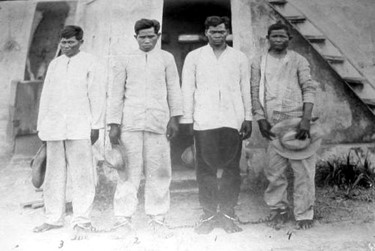
Four doomed Filipinos — in leg irons — are photographed moments before their execution by hanging, circa 1900-1901
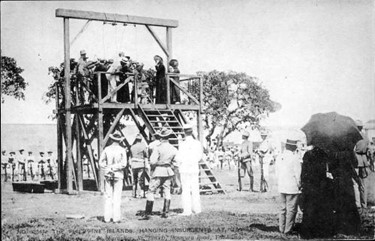
SIMULTANEOUS HANGING OF FOUR FILIPINOS. Original caption: “The Philippine Islands. Hanging Insurgents at Cavite”. Circa 1900.
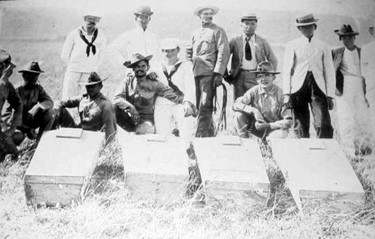
American soldiers and sailors, and some Filipino civil officials pose for a “souvenir” photo with the coffins bearing the bodies of the executed men
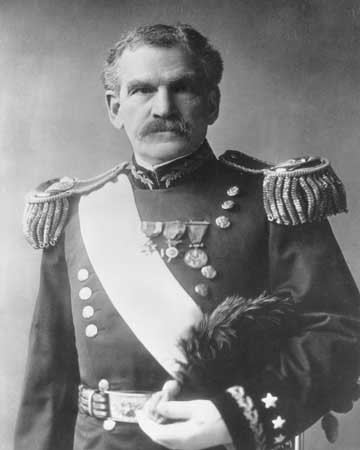
Maj. Gen. Adna R. Chaffee Commander of American Forces in the Philippines from July 1901 until October 1902
ARTICLE: AGUINALDO IS GIVEN LIBERTY, BUT FEARS HAND OF ASSASSIN
http://cdnc.ucr.edu/cgi-bin/cdnc?a=d&d=SFC19020707.2.9#
http://cdnc.ucr.edu/cgi-bin/cdnc?a=d&d=SFC19020707.2.9&e=——-en–20–1–txt-txIN——–1
San Francisco Call, Volume 87, Number 37, 7 July 1902
Filipino Leader Desires Bodyguard of Soldiers.
Chaffee Meets Late Foe for First Time.
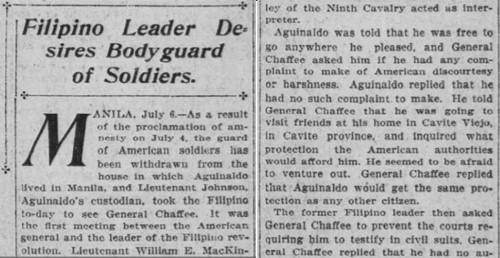
In another article “AGUINALDO IS TIMID” published by St. Joseph Evening Herald, (St. Joseph Michigan) on Monday July 7, 1902
He says he does not fear the vengeance of the friends of Gen. Luna.
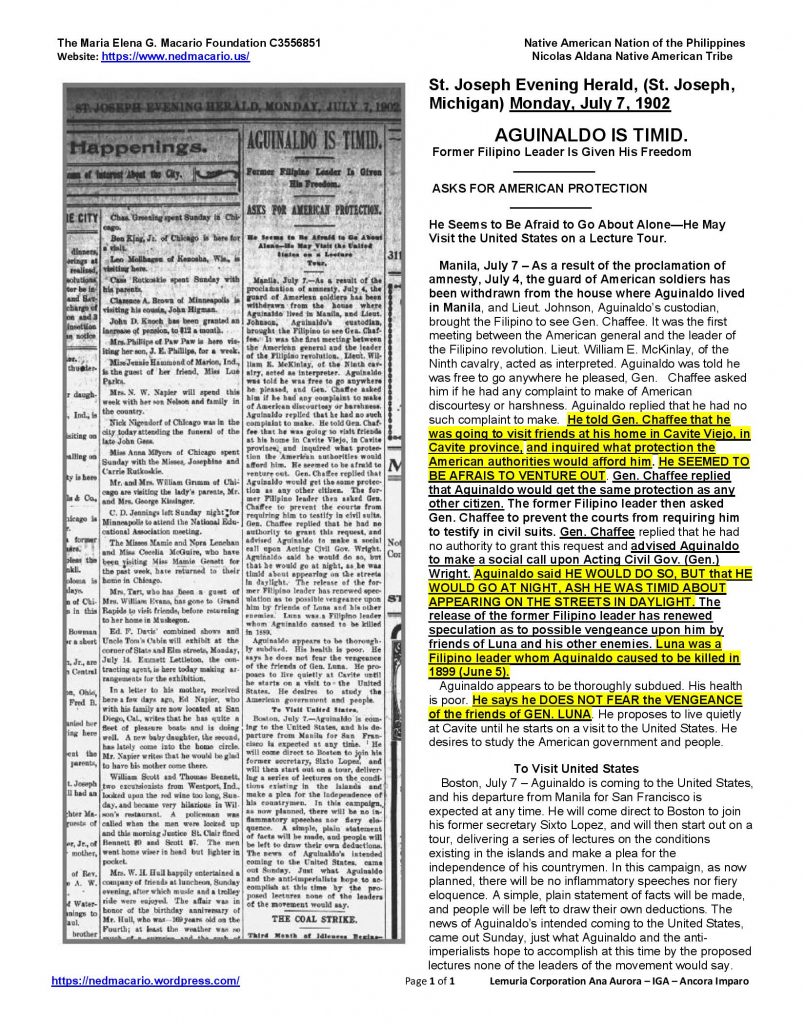
AGUINALDO IS GIVEN LIBERTY, BUT FEARS HAND OF ASSASSIN
http://cdnc.ucr.edu/cgi-bin/cdnc?a=d&d=SFC19020707.2.9#
San Francisco Call, Volume 87, Number 37, 7 July 1902
Filipino Leader Desires Bodyguard of Soldiers. Chaffee Meets Late Foe for First Time.
MANILA, July 6.— As a result of the proclamation of amnesty on July 4, the guard of American soldiers has JL f JbjL been withdrawn from .the ! house in Which Aguinaldo ‘ ¦ lived in Manila, and Lieutenant Johnson, ‘Aguinaldo’s custodian, took the Filipino to-day to see General Chaffee. It was the first meeting between the American general and the leader of the Filipino revolution. Lieutenant William E. MacKinley of the Ninth Cavalry acted as interpreter. ¦ ¦ y
Aguinaldo was told that he was free to go anywhere he pleased, and General Chaffee asked him if he had any complaint to make of American discourtesy or harshness. Aguinaldo replied that he had no such complaint, to make. He told General Chaffee that he ¦was going to visit friends at his home in Cavite Viejo, in Cavite province and inquired what protection the American authorities would afford him. He seemed to be afraid to venture out. . General Chaffee replied that “Aguinaldo would get the same protection as any, other citizen.”
“The former Filipino leader then asked General Chaffee to prevent the courts requiring: him to testify in civil suits. General Chaffee replied that he’ had no authority to grant this request, and advised Aguinaldo to make a social call upon acting Civil Governor Wright.
This Aguinaldo – said he would do, but he declared that he would go at night, as he was timid about appearing in the’ streets in daylight.”- ;
The release of the former Filipino leader has renewed speculation as to possible vengeance upon him by friends of Luna and his other enemies. Luna was a Filipino leader whom Aguinaldo caused to be killed in 1899.
In another article “AGUINALDO IS TIMID” published by St. Joseph Evening Herald, (St. Joseph Michigan) on Monday July 7, 1902
He says he does not fear the vengeance of the friends of Gen. Luna.
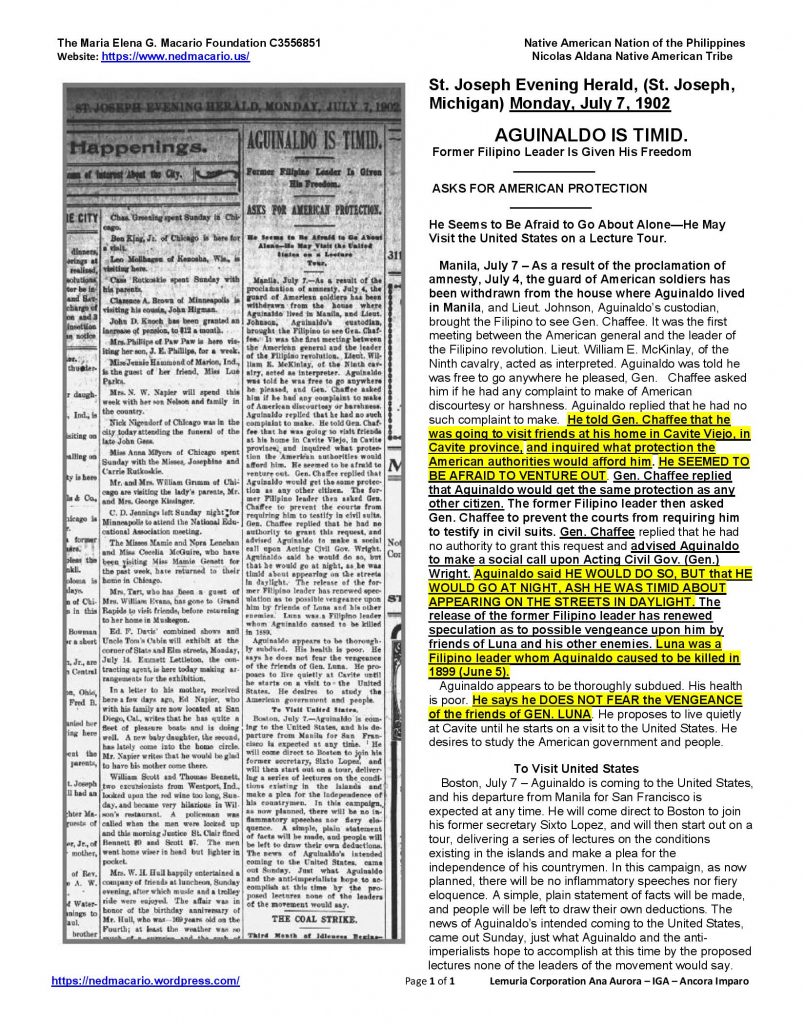
Comment: But Antonio Luna was from Ilocos Norte and grew up in Tondo, Manila. For Aguinaldo to reach Cavite Viejo, Cavite (now Kawit, Cavite), he had to pass through Las Piñas the ancestral land of Nicolas Aldana and three others.
Below is the map of Cavite, Morong & Manila During the Battle of Binakayan Nov. 9-11, 1896.
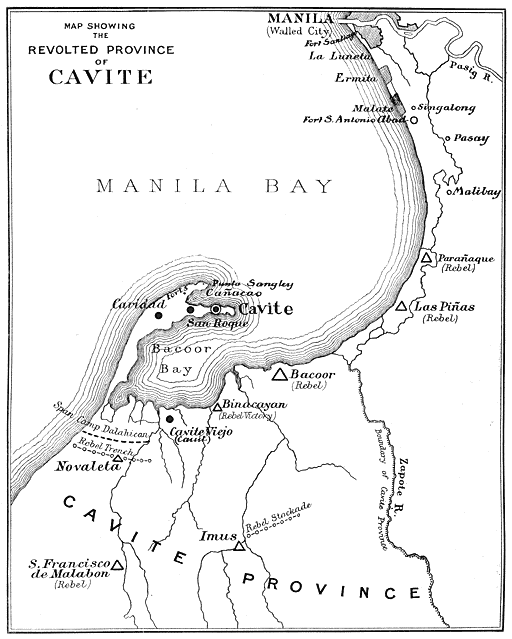
========================
OTHER NEWS:
ADMITS RHODE’S REPORT.
The court-martial trying Captain James A. Ryan of the Fifteenth Cavalry on the charge that he was unnecessarily severe with the natives of the province where he was stationed has admitted, for purposes of cross-examination, the entire report of Judge Rhode, which forms the basis of the charge against the captain. The order, convening the court disregarded all the’ allegations except the one of cruelty to. natives. . -•
Judge Rhode has testified that he had no personal knowledge of the facts In the principal allegations, and has declined to give the names of his informants. He admitted and then denied the right of the* defense to require an answer to the question as to where he obtained his information. . • ;r’i.; ; -K
The cross-examination of Major Cornelius; Gardener, Governor of Tayabas province.’ Luzon, by the board Which has been Investigating, the charges of cruelty, etc/, brought by the major against American officers and has been completed. The board had again formally demanded the production by- Major Gardener of testimony as to . the alleged” ho*tHity of f lie- military’ authoritiM : in th» Philippines to the. civil government. Major, Gardener has promised to answer this demand on July 7. Ho ‘testified that he had not intended to reflect upon th* fair)pp3s of the. court, and that the recorder had. not, to his knowledge. Interfered -with, his witnesses. ¦
SULTAN GROWS : DEFIANT.
J i The Sultan of Bacolod. Mindanao, haa sent: an Insultingly -worded letter to the commander of the American expedition ‘to Lano Lano, in Mindanao, in which. h« threatens to begin offensive operations in August. The Sultan’ is at present strengthening his position. Captain John H. Shollenberger of th*” Tenth Infantry committed suicide by shooting at Iligan, on the island of Mindanao, July 4. He was despondent.. Second Lieutenant Thomas Ryan of the Philippine scouts’ also committed suicide .by shooting, in the interior of the Island of Mindanao on ¦ June 1$. ¦ i – A number, of the former followers of the insurgent general Lukban, who”, operated and was finally captured in the. Island of Sanaar, were examined here on the charge of misappropriation of revolutionary funds. General Chaffee has permitted Lukban to go through the captured insurgent archives in Manila for the purpose of obtaining documents to show the innocence of his’ followers.
AMERICAN AND FILIPINO LEADr ERS WHO HAVE JUST HAD THEIR FIRST MEETING.
Welcoming The Philippine Territory To The Union (United States of America)
Two years after President Theodore Roosevelt declared the end of the Philippine War 1899-1902, to introduce the USA’s most recent acquisition, native inhabitants of the Philippines were included in the 1904 World’s Fair in St. Louis, MO.

Dubbed the Louisiana Purchase Exposition the St. Louis World’s Fair featured Apache hero Geronimo and Natives of the Philippines.

Geronimo, photographed by the fair’s official photographer, William H. Rau

Caption: “An Igorot Family, Philippine Exhibit, World’s Fair, St. Louis, 1904
Source:
The Largest Human Zoo in World History Visiting the 1904 World’s Fair in St. Louis.
Tuesday, April 14, 2020
https://www.laphamsquarterly.org/roundtable/largest-human-zoo-world-history
